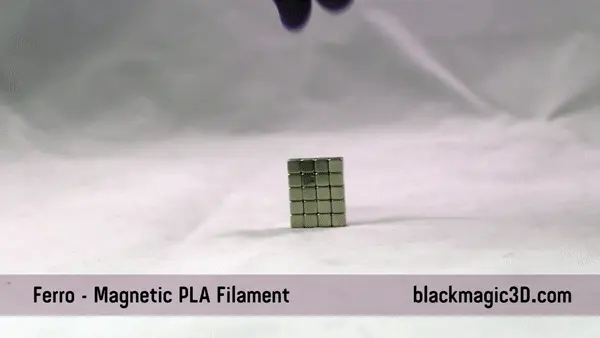What can you 3D print with a powerful magnetic filament? Graphene 3D wants you to find out.
Graphene 3D Lab creates and markets graphene-based nanocomposite materials for 3D printing. They’ve already had their share of products and creative patent applications, they are causing a huge stir with their newest release: a conductive graphene filament. The powerful, magnetic filament is definitely one of the more exciting tools to come out for 3D printing recently.

What is Magnetic Filament Good For?
The filament is used to 3D print circuitry, capacitive touch sensors, and for electromagnetic and radio-frequency (EMI and RF) shielding. One suggestion is to use the filament to create magnetic sensors (cool!). They also note that it is good for educational and DIY projects.
When used as circuitry within a 3D print, users can create computer interfaces and Arduino boards, as well as power up items such as LED’s and wearable electronics. As a capacitive (touch) sensor, users can create controllers, digital keyboards, trackpads, drum-machines, and MIDI controllers.
EMI and RF-shielding is widely used in a range of industries – including aerospace, automotive, and medical – to protect against competing signals which may lead to false readings on equipment. Conductive Graphene Filament is ideal for designing EMI/RF shields used in highly-customized items.
The seemingly small step of making filament a powerful magnet will open doors for makers and businesses, alike.
“It has always been the objective of Graphene 3D to create new opportunities for 3D printing. With every functional filament we introduce to the market, the types of 3D projects that can be successfully printed expands exponentially,” said Elena Polyakova, Co-CEO of Graphene 3D. “As this filament is ideally suited to switches, sensors and actuators, we also expect this new functionality will challenge more traditional manufacturers to examine incorporating more 3D printing technology into their manufacturing processes.”
The magnetic filament comes in black with a 1.75 mm diameter. It is unlikely to rust and has a volume resistivity of 1 ohm-cm. Graphene 3D recommend neodymium iron boron (NdFeB) or samarium cobalt (SmCo) magnets for the best results. They also note this particular PLA is more abrasive and brittle than standard PLA. Be sure to do first layer adjustments or replace your nozzle. The 350 gram spools can be found on Amazon, or Graphene’s own store, blackmagic3d.com.
What’s next for Graphene 3D?
Daniel Stolyarov, Co-CEO of Graphene 3D, added that they expect 2016 to be “a significant year for Graphene 3D in terms of introducing new functional filaments.” They “have several new functional filaments in the development pipeline,” and that’s exciting.
What else do they have up their sleeves?
License: The text of "Magnetic Filament Helps Print Sensors And Circuitry" by All3DP is licensed under a Creative Commons Attribution 4.0 International License.